
Telecommunications and cable service provider Liberty Broadband (NASDAQ:LBRDK) announced better-than-expected revenue in Q2 CY2025, with sales up 6.1% year on year to $261 million. Its GAAP profit of $2.68 per share increased from $1.36 in the same quarter last year.
Is now the time to buy Liberty Broadband? Find out by accessing our full research report, it’s free.
Liberty Broadband (LBRDK) Q2 CY2025 Highlights:
- Revenue: $261 million vs analyst estimates of $251.7 million (6.1% year-on-year growth, 3.7% beat)
- Adjusted EBITDA: $113 million vs analyst estimates of $78.9 million (43.3% margin, 43.2% beat)
- Operating Margin: 15.7%, up from 8.5% in the same quarter last year
- Free Cash Flow was $37 million, up from -$35 million in the same quarter last year
- Market Capitalization: $8.54 billion
Company Overview
Operating across the United States, Liberty Broadband (NASDAQ:LBRDK) is a provider of high-speed internet, cable television, and telecommunications services across various markets.
Revenue Growth
A company’s long-term sales performance is one signal of its overall quality. Any business can put up a good quarter or two, but the best consistently grow over the long haul.
With $1.05 billion in revenue over the past 12 months, Liberty Broadband is a small player in the business services space, which sometimes brings disadvantages compared to larger competitors benefiting from economies of scale and numerous distribution channels. On the bright side, it can grow faster because it has more room to expand.
As you can see below, Liberty Broadband’s sales grew at an incredible 131% compounded annual growth rate over the last five years. This shows it had high demand, a useful starting point for our analysis.
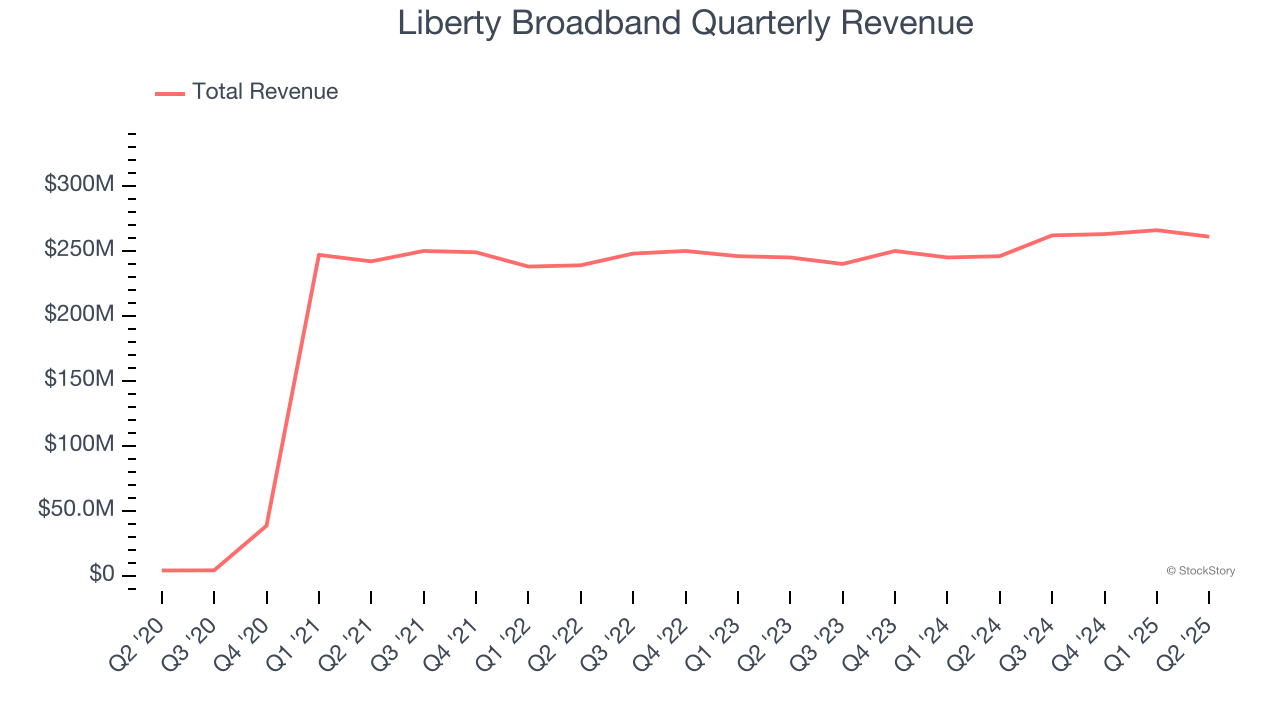
We at StockStory place the most emphasis on long-term growth, but within business services, a half-decade historical view may miss recent innovations or disruptive industry trends. Liberty Broadband’s recent performance shows its demand has slowed significantly as its annualized revenue growth of 3.1% over the last two years was well below its five-year trend. 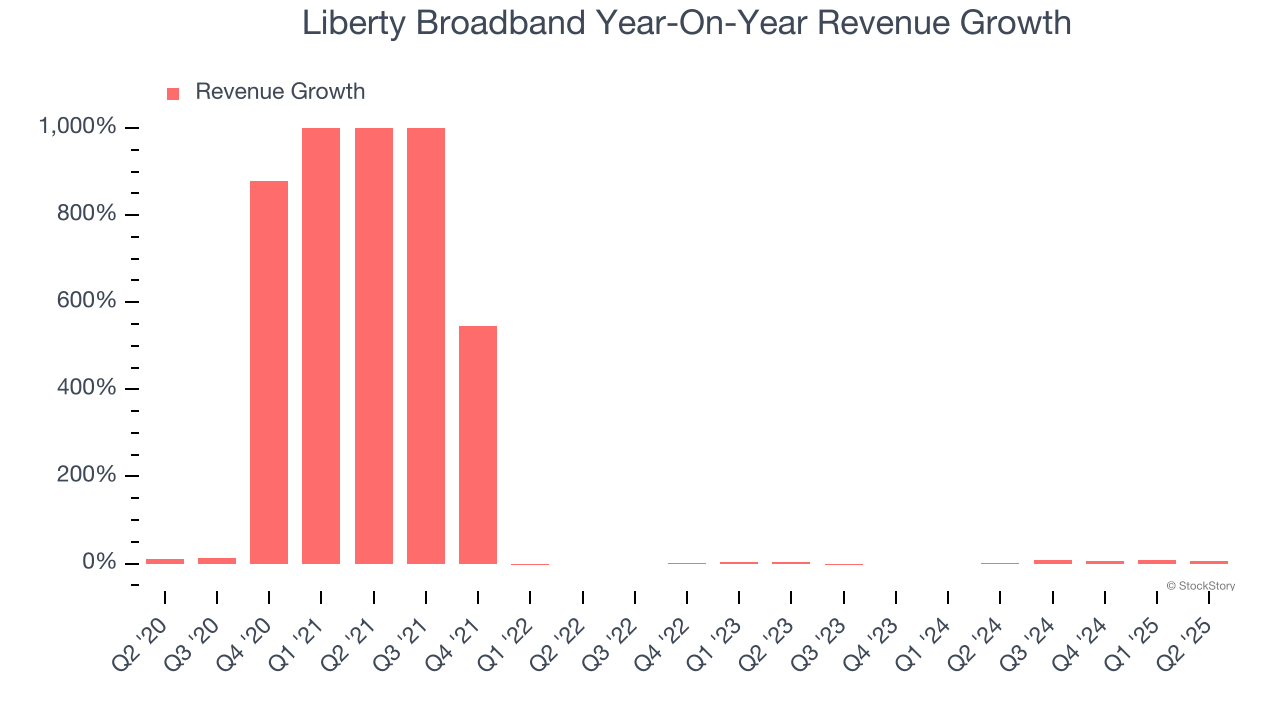
This quarter, Liberty Broadband reported year-on-year revenue growth of 6.1%, and its $261 million of revenue exceeded Wall Street’s estimates by 3.7%.
Looking ahead, sell-side analysts expect revenue to grow 3% over the next 12 months, similar to its two-year rate. This projection doesn't excite us and suggests its newer products and services will not catalyze better top-line performance yet.
Here at StockStory, we certainly understand the potential of thematic investing. Diverse winners from Microsoft (MSFT) to Alphabet (GOOG), Coca-Cola (KO) to Monster Beverage (MNST) could all have been identified as promising growth stories with a megatrend driving the growth. So, in that spirit, we’ve identified a relatively under-the-radar profitable growth stock benefiting from the rise of AI, available to you FREE via this link.
Operating Margin
Operating margin is an important measure of profitability as it shows the portion of revenue left after accounting for all core expenses – everything from the cost of goods sold to advertising and wages. It’s also useful for comparing profitability across companies with different levels of debt and tax rates because it excludes interest and taxes.
Liberty Broadband was profitable over the last five years but held back by its large cost base. Its average operating margin of 5.1% was weak for a business services business.
On the plus side, Liberty Broadband’s operating margin rose by 18.8 percentage points over the last five years, as its sales growth gave it immense operating leverage.
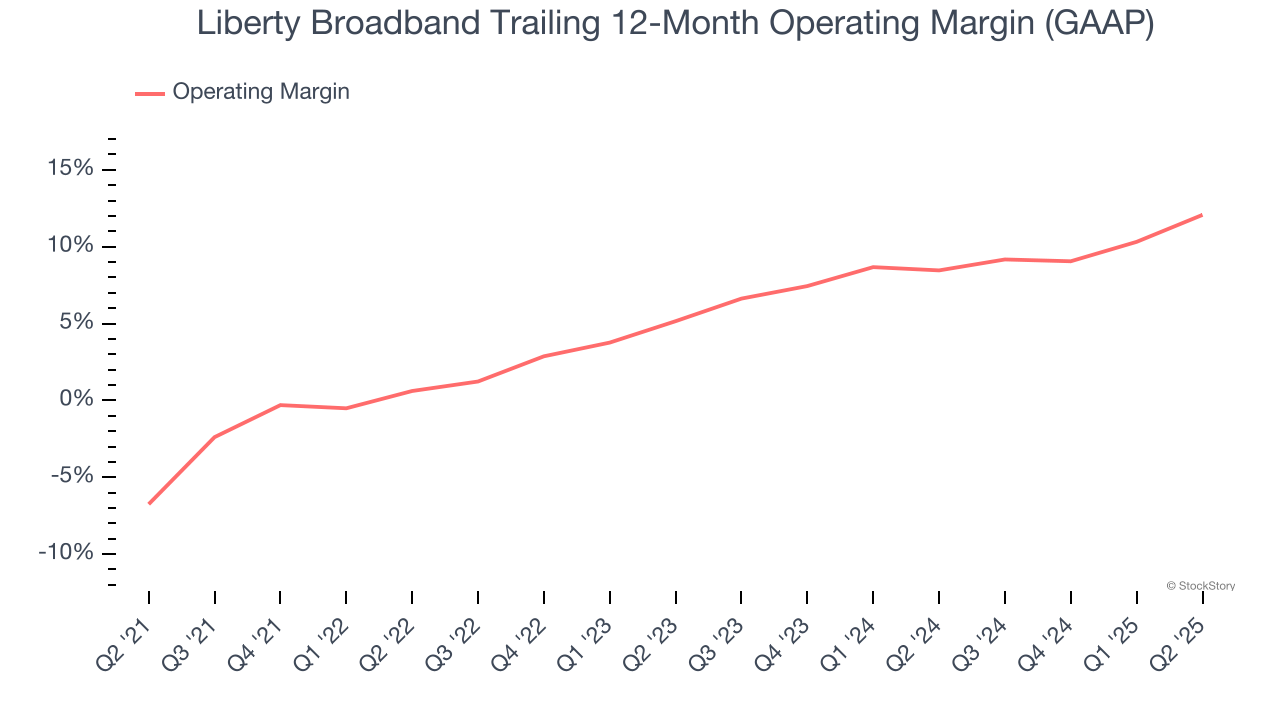
In Q2, Liberty Broadband generated an operating margin profit margin of 15.7%, up 7.2 percentage points year on year. This increase was a welcome development and shows it was more efficient.
Earnings Per Share
Revenue trends explain a company’s historical growth, but the long-term change in earnings per share (EPS) points to the profitability of that growth – for example, a company could inflate its sales through excessive spending on advertising and promotions.
Liberty Broadband’s EPS grew at an astounding 49.9% compounded annual growth rate over the last five years. Despite its operating margin improvement and share repurchases during that time, this performance was lower than its 131% annualized revenue growth, telling us the delta came from reduced interest expenses or taxes.
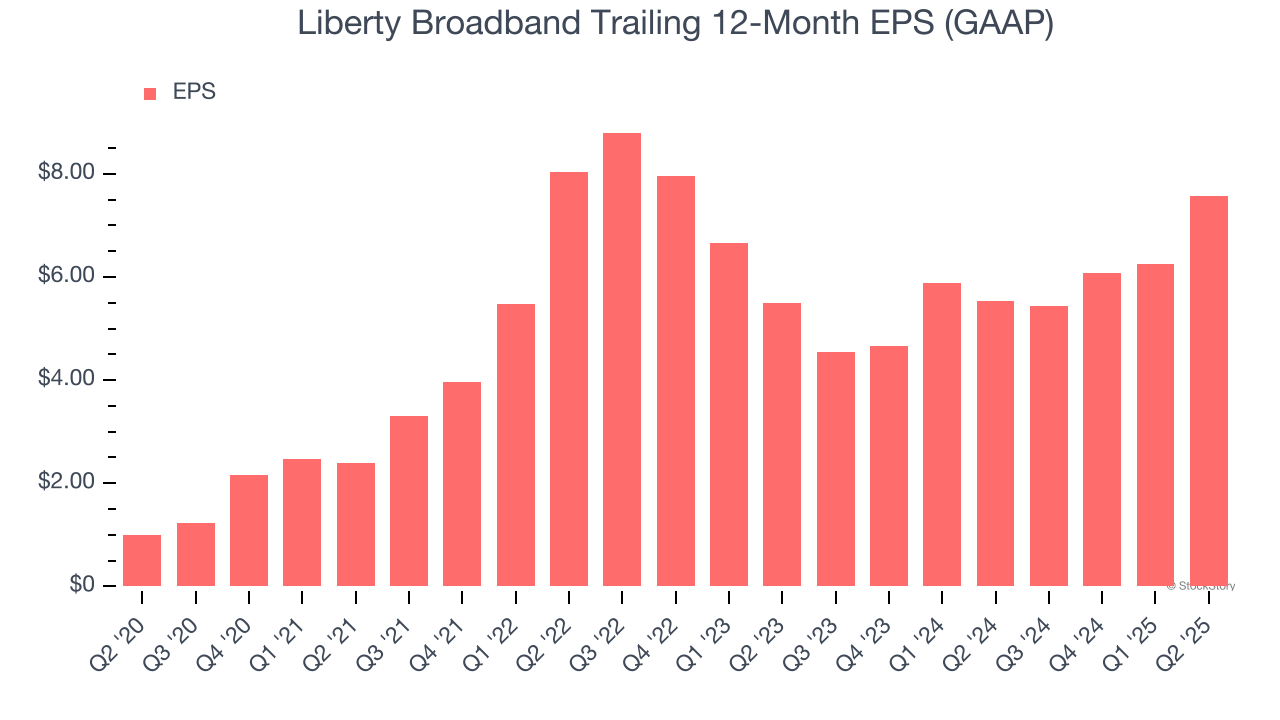
Like with revenue, we analyze EPS over a more recent period because it can provide insight into an emerging theme or development for the business.
Liberty Broadband’s two-year annual EPS growth of 17.4% was great and topped its 3.1% two-year revenue growth.
We can take a deeper look into Liberty Broadband’s earnings quality to better understand the drivers of its performance. Liberty Broadband’s operating margin has expanded by 6.3 percentage points over the last two yearswhile its share count has shrunk 2.7%. These are positive signs for shareholders because improving profitability and share buybacks turbocharge EPS growth relative to revenue growth. 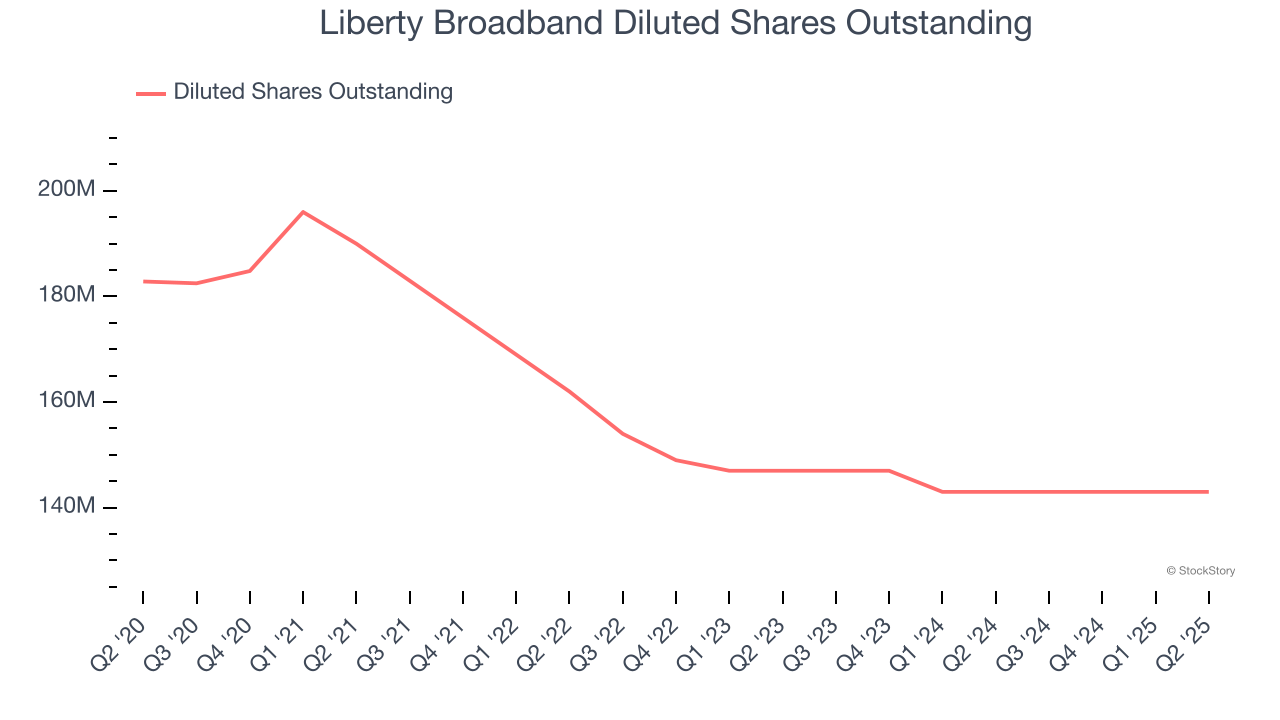
In Q2, Liberty Broadband reported EPS at $2.68, up from $1.36 in the same quarter last year. We also like to analyze expected EPS growth based on Wall Street analysts’ consensus projections, but there is insufficient data.
Key Takeaways from Liberty Broadband’s Q2 Results
We enjoyed seeing Liberty Broadband beat analysts’ revenue expectations this quarter. Zooming out, we think this was a solid print. The market seemed to be hoping for more, and the stock traded down 1.5% to $58.66 immediately following the results.
Big picture, is Liberty Broadband a buy here and now? We think that the latest quarter is only one piece of the longer-term business quality puzzle. Quality, when combined with valuation, can help determine if the stock is a buy. We cover that in our actionable full research report which you can read here, it’s free.
